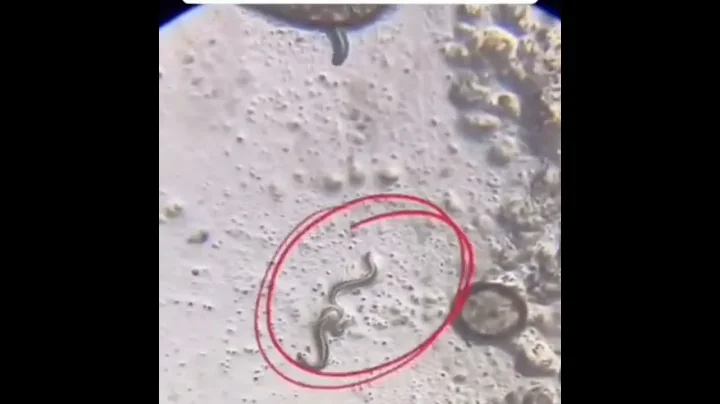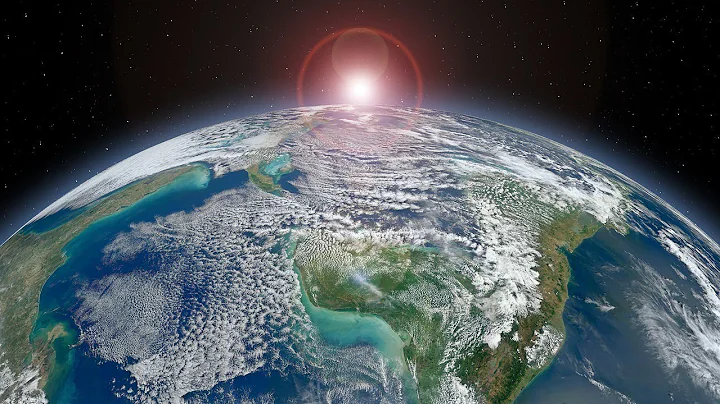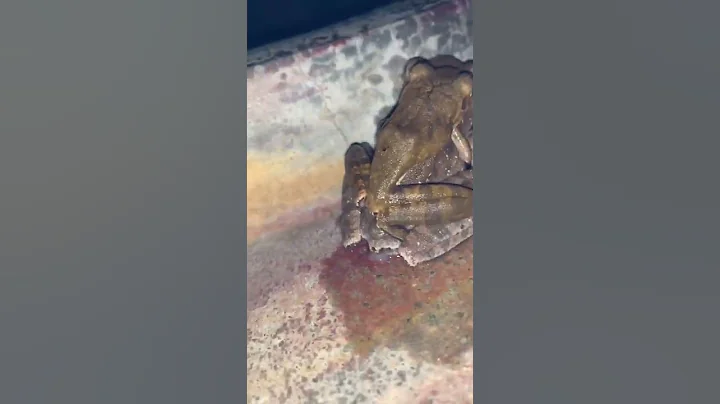Bacteria are the most widely distributed, smallest, and most diverse organisms on earth. It can be said that bacteria are found in almost every corner of the earth and in every moment of our daily lives.
Normally, as a type of microorganism, bacteria are very small and their existence is difficult to detect with the naked eye. They can only be seen with a microscope. Recently, scientists in the United States have broken this traditional perception. The bacteria they discovered are significantly larger. Not only can they be clearly seen with the naked eye, but their diameter has reached 2 centimeters. This has simply subverted our concept of microorganisms. Cognition!

Record-breaking giant bacteria
Previously, the largest bacteria discovered by scientists was discovered in Namibia in 1999. It was named "Namibia's Sulfur Pearl". Its shape is a string of white beads, and some individuals can Reaching 0.75 mm, it can almost be distinguished with the naked eye. For the next 10 years, this single-cell bacterium maintained the record as the world's largest bacterium with its unusual "size".

This situation was broken in 2009. Scientists discovered a giant bacterium with a diameter of about 1 centimeter on a small island in the middle of the Caribbean Islands in North America, which was named "Sulfothococcus pallidum". The bacteria have been discovered for the first time, lurking quietly on a rotting leaf in the salty waters of a red mangrove swamp. Scientists were extremely excited after discovering this bacterium. On the one hand, it means that the Caribbean region should hide more things that people did not know before. On the other hand, such a large bacterium will directly impact people's understanding of Definition of microorganism.

Thirteen years later, scientists came to this water area again and took out some water samples from the water area. Next, they wanted to conduct microbial culture experiments. Unexpectedly, among the collected samples, there were some white vermicelli-like things floating on them. At that time, they thought they were some plant pollen or other impurities contained in the samples. Later, through a series of processes such as fluorescence, , but a real single-celled organism.

This bacterium reaches 2 centimeters in length, twice as long as the largest bacterium discovered 13 years ago, more than 1,000 times larger than other typical bacteria, and even larger than the body cells of fruit fly . This bacterium was named T. magnifica. After identification, it was found to be of the same genus as the giant bacterium discovered 13 years ago. It can be said to be a close relative. With this discovery, the researchers happily said: "Discovering this bacteria is like meeting a person as tall as Mount Everest." Is this giant bacterium still a "bacteria"? Many biologists said that the discovery of this new giant bacteria has made humans increasingly aware that the microbial world has complexity and diversity that we can hardly imagine. At the same time, bacterial "families" will also have characteristics that we have never known before. Their complex structure and genetic adaptability allow them to grow to unexpected cell sizes. Some biologists said that in traditional understanding, the concept of microorganisms describes those tiny organisms that are invisible to the naked eye. This new discovery will allow us to re-examine the concept of microorganisms. We should not be able to No longer simply identifying bacteria as microorganisms, this concept seems outdated. From a biological classification point of view, bacteria belong to prokaryotes , and the cells of animals, plants and fungi around us currently belong to " eukaryotic cells ". Bacteria, prokaryotes and eukaryotes are the most The obvious difference is that there is no nucleus and in its cells, which means there is no separate "compartment" for storing DNA genetic material. The new giant bacteria discovered this time also breaks the perception that bacteria are prokaryotes, because within the cells of this giant bacteria, its genetic material is wrapped in something like an "inner membrane" . Then, if we do not attribute these giant bacteria to prokaryotes, there will also be a problem, that is, they are indeed composed of only one cell. To solve this problem, either the definition of bacteria needs to be changed, or the definition of prokaryotes needs to be changed, which is both subversive. Why can For a long time, scientists have believed that single-celled organisms cannot grow very large, because the larger the cell, the more energy and nutrients must be absorbed to maintain the physiological activity of the cell, which will increase the surface area. When it reaches a certain level, it can no longer support enough space for the absorption, storage and transformation of energy and nutrients. Moreover, as the size of the cell increases, its internal ATP, the most direct source of energy acquisition, will become extremely difficult to transport. However, T. magnifica, a giant bacterium, breaks the traditional understanding of the above people in many aspects. Its cell structure is "deliberately" divided into many relatively independent "compartments", each " "Compartments" all perform different functions, which is equivalent to dividing a cell into a number of independent and coordinated "sub-cells", which can break through the many effects of larger volume and larger surface area on cell functions. limit. What is even more special is that the DNA genetic material of this kind of cell is "protected" in the "compartment" composed of membrane binding. The genetic material in the core area alone is almost as large as cantaloupe seeds. big. This isolation of genetic material and its structure blurs the distinction between bacterial and eukaryotic cells, ensuring more effective control of the body's structural complexity. It is this structure that makes the number of genes of T. magnifica bacteria exceed 11,000, which is several times more than that of ordinary bacteria. The above is the internal reason why this type of bacteria can be so large. From the outside, the survival and development of organisms must have an appropriate external environment to provide them with sufficient sources of energy and materials. After testing, the gene of this giant bacterium contains the biochemical reaction gene that can carry out sulfur oxidation and carbon fixation. That is to say, some inorganic chemical substances are absorbed from the surrounding environment and converted into 

grow so big?


According to the analysis of scientists, this giant bacteria can not only fix carbon and use sugar, but also grow in various substrates and corresponding natural environments. In addition, it can also "communicate" with each other and even send out signals to indicate These giant bacteria not only have complex mechanisms that exceed those of ordinary bacteria, but also have certain "social behavioral capabilities", which has definitely once again subverted our understanding of the characteristics of simple microorganisms.

Again, the world is full of wonders. In some corners of the world, there must be creatures and phenomena that we have never known before, waiting for us to discover and crack them.
#American scientific research team discovered 2 cm long giant bacteria#





















